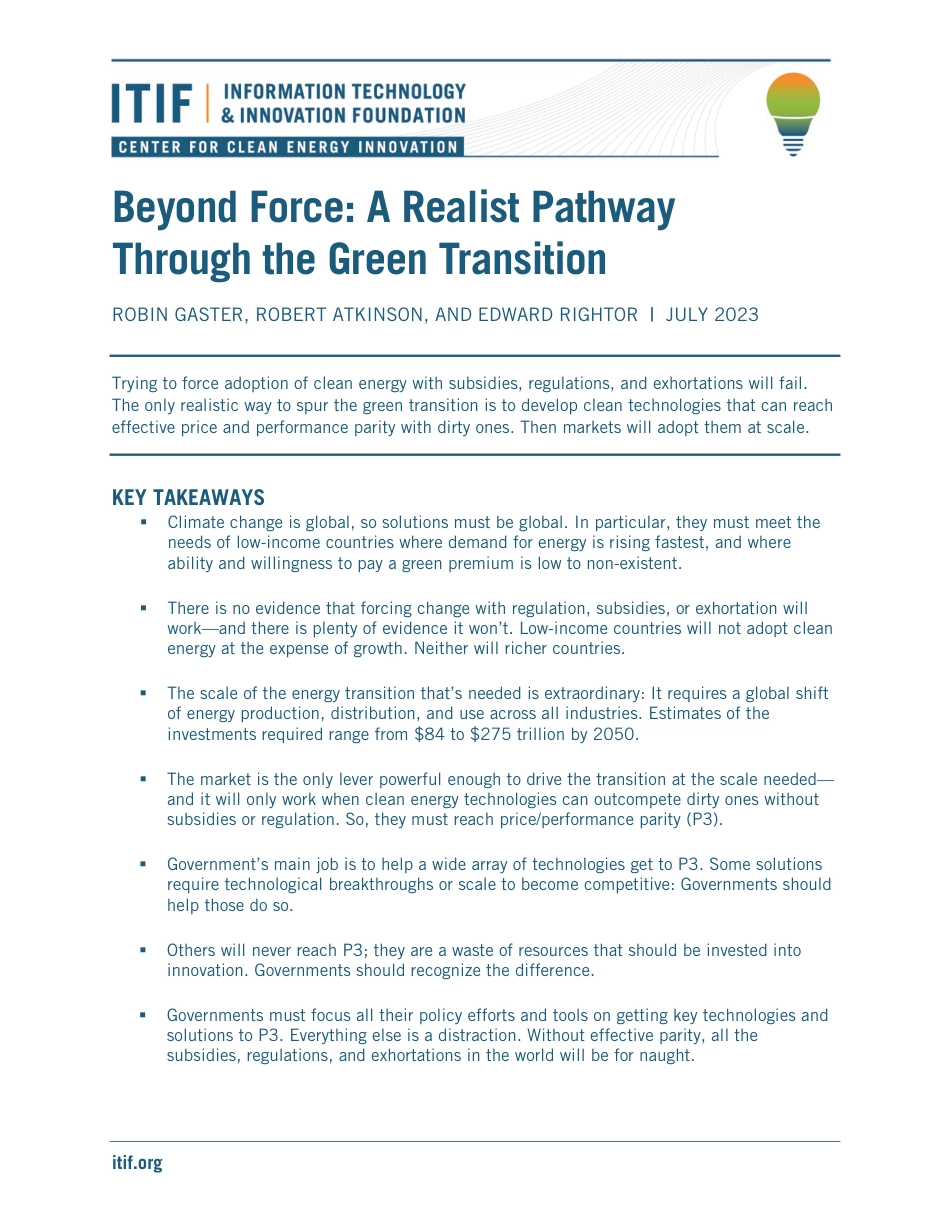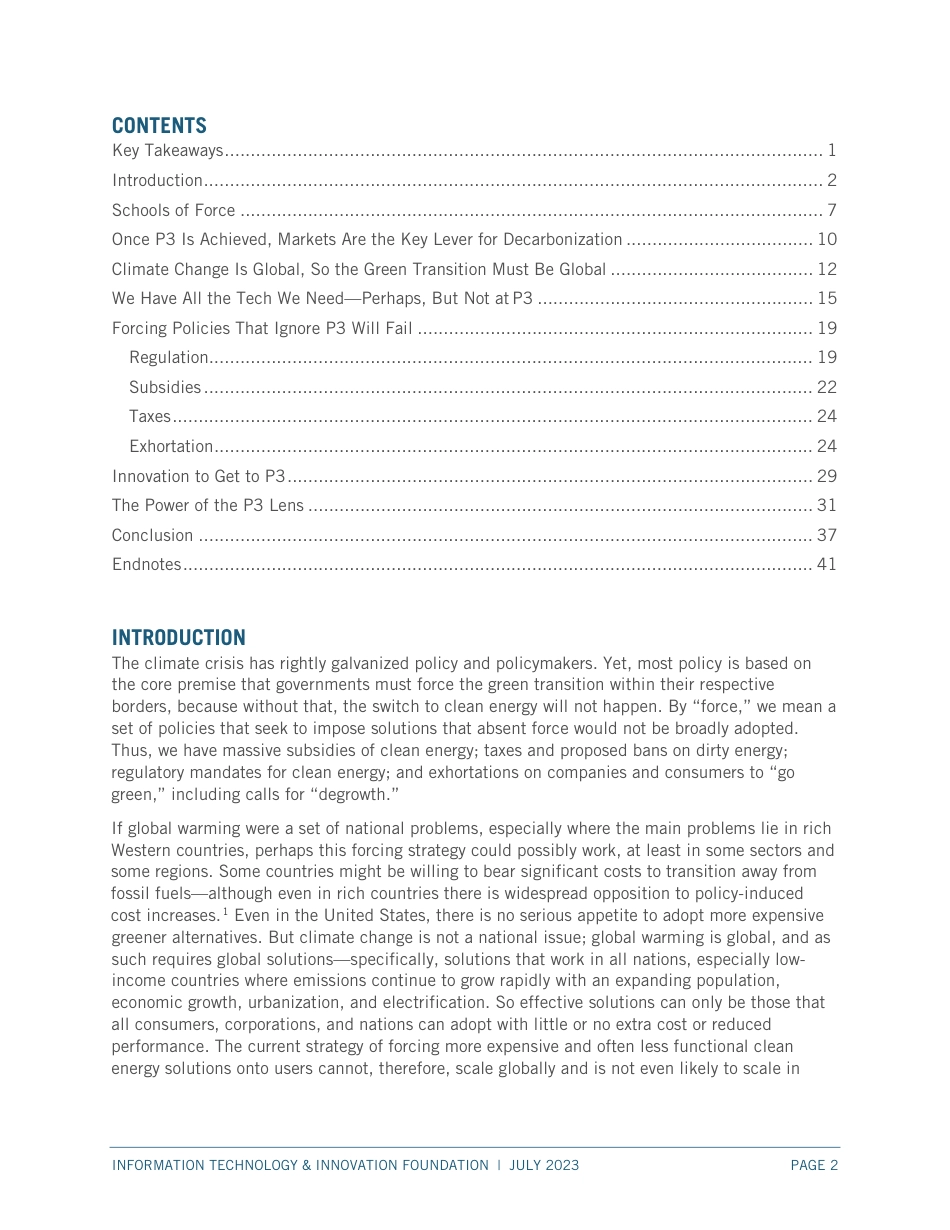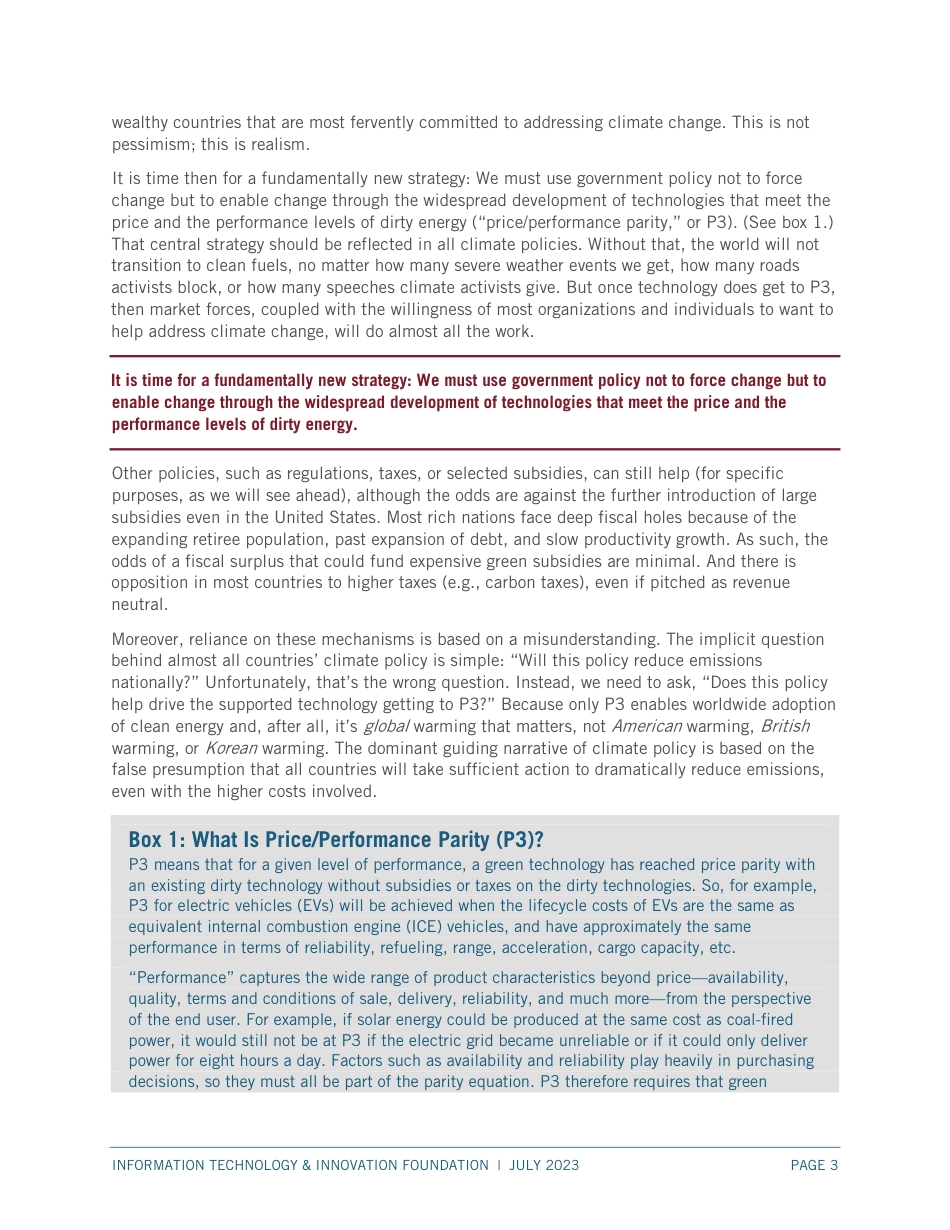itif.org Beyond Force: A Realist Pathway Through the Green Transition ROBIN GASTER, ROBERT ATKINSON, AND EDWARD RIGHTOR | JULY 2023 Trying to force adoption of clean energy with subsidies, regulations, and exhortations will fail. The only realistic way to spur the green transition is to develop clean technologies that can reach effective price and performance parity with dirty ones. Then markets will adopt them at scale. KEY TAKEAWAYS Climate change is global, so solutions must be global. In particular, they must meet the needs of low-income countries where demand for energy is rising fastest, and where ability and willingness to pay a green premium is low to non-existent. There is no evidence that forcing change with regulation, subsidies, or exhortation will work—and there is plenty of evidence it won’t. Low-income countries will not adopt clean energy at the expense of growth. Neither will richer countries. The scale of the energy transition that’s needed is extraordinary: It requires a global shift of energy production, distribution, and use across all industries. Estimates of the investments required range from $84 to $275 trillion by 2050. The market is the only lever powerful enough to drive the transition at the scale needed—and it will only work when clean energy technologies can outcompete dirty ones without subsidies or regulation. So, they must reach price/performance parity (P3). Government’s main job is to help a wide array of technologies get to P3. Some solutions require technological breakthroughs or scale to become competitive: Governments should help those do so. Others will never reach P3; they are a waste of resources that should be invested into innov...



